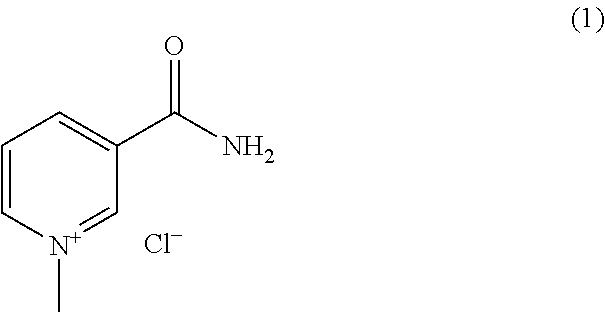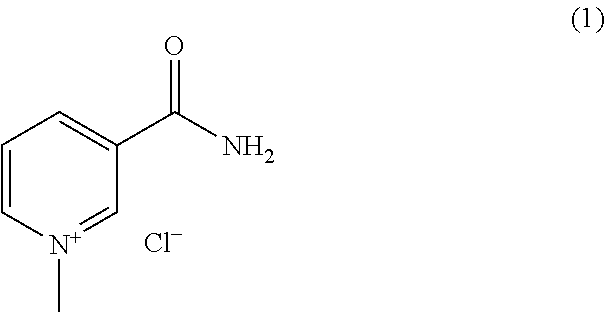Bioenergetic combinations and methods of using same
a technology of bioenergetics and combinations, applied in the field of bioenergetic combinations and methods, can solve the problems of mitochondrial fragmentation (“mf”) or dysfunctional mitochondria not meeting the energy demands required for normal cellular functioning, and the uncertainty of the art of leveraging the functional components of the cell to achieve youth or its perception through appearance,
- Summary
- Abstract
- Description
- Claims
- Application Information
AI Technical Summary
Benefits of technology
Problems solved by technology
Method used
Image
Examples
example 1
rial Fragmentation in Keratinocytes
[0117]The purpose of this experiment was to compare the extent of protection to skin delivered by different actives from mitochondrial fragmentation that takes place as a consequence of aging.
[0118]The higher the Mitochondrial Fragmentation value, the less protection to the skin is delivered by the given active or combination of actives. Note, for biological systems such as mitochondria, which are microscale components of skin cells, the absolute values of mitochondrial fragmentation numbers are small, and small differences can be significant.
[0119]The effect of B3 alone and in combination with low levels of AceMet and MeNAM on mitochondrial fragmentation in keratinocytes after 5 days exposure is shown in the Table below:
TABLE 1MitochondrialTest SampleFragmentationControl (no treatment)1.88B3* (10 mM)1.67 aAceMet* (500 uM) + B3 (10 mM)1.59 a,bMeNAM* (500 uM) + B3 (10 mM)1.52 a,ba Significantly better over control (P b Significantly better over B3 a...
example 2
rial Fragmentation in Keratinocytes— UV Study
[0122]The purpose of this experiment was to compare the extent of protection to skin delivered by different actives from mitochondrial fragmentation that takes place as a consequence of aging with or without UV exposure.
[0123]The effect of B3 and low levels of AceMet and MeNAM on mitochondrial fragmentation in keratinocytes 3 days before and 4 days after UV-exposure is shown in the Table below:
TABLE 2Mitochondrial FragmentationTest Sample(−) UV (3 days)(+) UV (4 days)Control (no treatment)1.301.58 cB3 (10 mM)1.181.34 dAceMet (500 uM)1.47c,e1.76c,e,hMeNAM (10 mM)1.15a1.29a,dAceMet (500 uM) + B3 (10 mM)1.02a,b,f1.10a,b,d,fMeNAM (500 uM) + B3 (10 mM)0.96a,b,g1.20a,b,d,gaSignificantly better over Non UV-exposed control (P bSignificantly better over B3 alone (P cSignificantly worse over Non-UV exposed control (P dSignificantly better over UV-exposed control (P eSignificantly worse over B3 (P fSignificantly better over AceMet alone (P gSignific...
PUM
| Property | Measurement | Unit |
|---|---|---|
| particle size | aaaaa | aaaaa |
| particle size | aaaaa | aaaaa |
| working distance | aaaaa | aaaaa |
Abstract
Description
Claims
Application Information
 Login to View More
Login to View More - R&D
- Intellectual Property
- Life Sciences
- Materials
- Tech Scout
- Unparalleled Data Quality
- Higher Quality Content
- 60% Fewer Hallucinations
Browse by: Latest US Patents, China's latest patents, Technical Efficacy Thesaurus, Application Domain, Technology Topic, Popular Technical Reports.
© 2025 PatSnap. All rights reserved.Legal|Privacy policy|Modern Slavery Act Transparency Statement|Sitemap|About US| Contact US: help@patsnap.com



